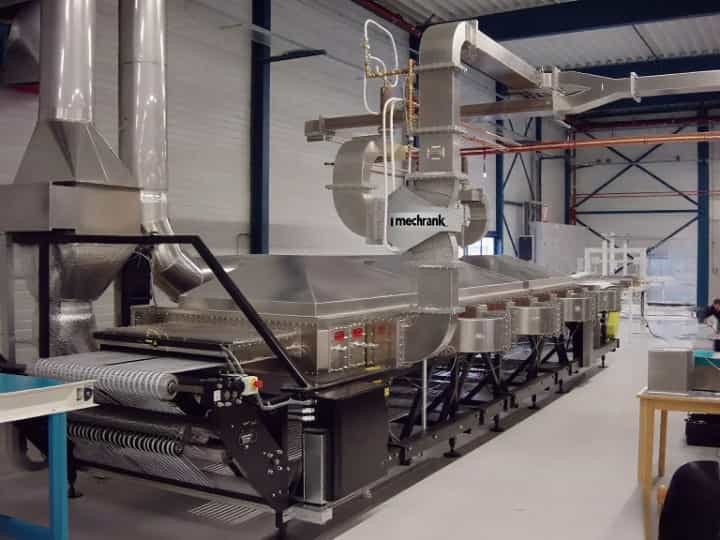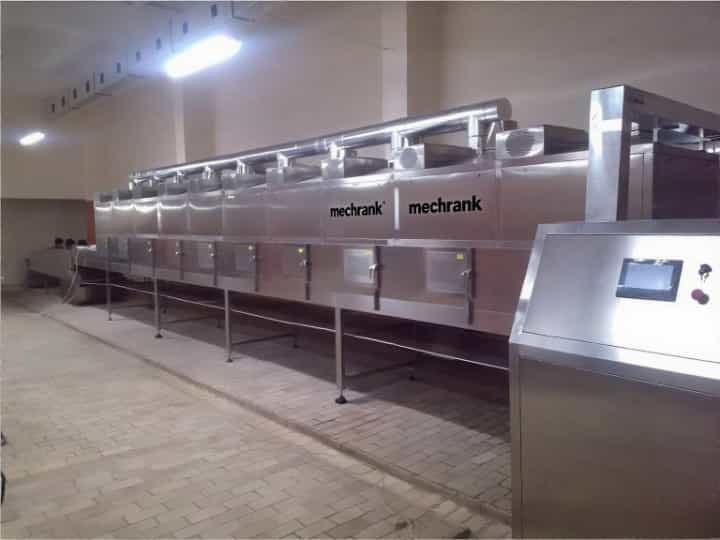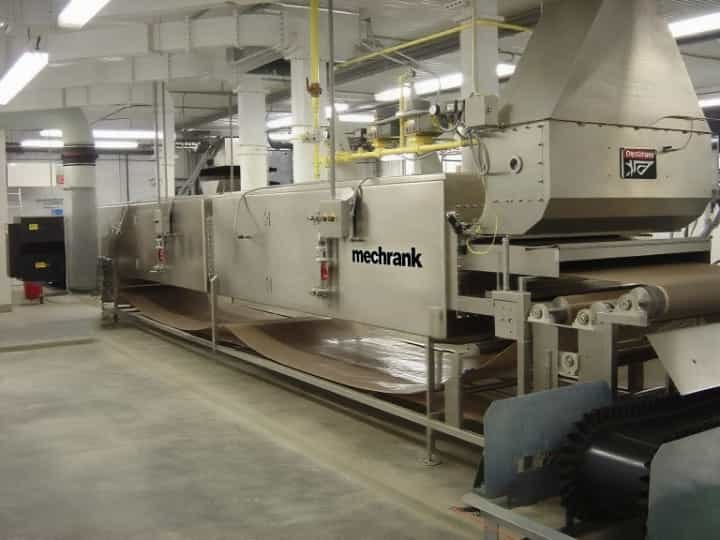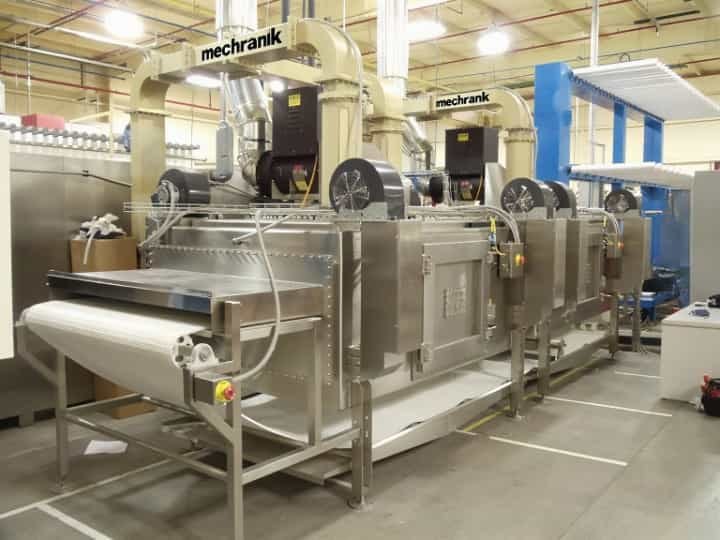A microwave dryer takes water out of materials by using microwave energy. This technology dries things fast and works well. Many industries use a microwave dryer to make drying faster. The global market for microwave dryers is growing quickly. It is worth $969.53 million in 2024. It may reach $1,614.5 million by 2033. The table below shows the market size and how fast it grows.
Metric | Value (USD Million) | Notes |
|---|---|---|
Market Size (2024) | 969.53 | Base year valuation |
Market Size (2025) | 1,026.05 | Projected next year |
Market Size (2033) | 1,614.5 | Long-term projection |
Compound Annual Growth Rate | 5.83% | Forecast period CAGR |
A microwave dryer is a good way to remove water in many uses.
Key Takeaways
Microwave dryers use microwave energy to dry things fast. They heat things from the inside out. They save energy and keep products good by drying faster. They use less heat than old dryers. Microwave drying works for many things like food, medicine, clothes, and chemicals. This technology has safety features. But you must use it carefully to stop overheating or damage. Big microwave dryers help companies dry things faster. They also save energy and protect delicate products.
What Are the Basics of Microwave Drying?
Microwave drying uses microwave energy to remove moisture from materials quickly and efficiently. This method is advantageous for its speed, uniform heating, and energy efficiency compared to traditional drying techniques.
What Is a Microwave Dryer
A microwave dryer is a machine that takes water out of things using microwave energy. It uses electromagnetic waves to make heat inside the item. This makes drying much faster. Many companies use microwave dryers because they work quickly and save energy.
A normal microwave dryer has some main parts:
Magnetron: This part turns electrical energy into microwave energy at 2.45 GHz.
Waveguide: This is a metal tube that sends microwaves into the drying chamber.
Drying Chamber: This chamber holds the product and keeps microwaves focused.
Material Handling System: Conveyor belts or trays move items through the chamber. This helps microwaves reach all sides.
Control Panel: People use this panel to set power, speed, and temperature. It shows real-time data too.
Cooling System: Fans or water systems stop the machine from getting too hot.
Sensor System: Sensors check moisture, temperature, and density. This helps control the drying process.
Note: Microwave dryers can dry many kinds of products. These include food like fruits, vegetables, meats, and grains. They also dry medicines, textiles, foam, wood, and chemicals. This makes microwave dryers helpful in many industries.
How It Works
Microwave dryers use a process called dielectric heating. The magnetron makes microwaves that go through the waveguide into the drying chamber. When microwaves hit the product, they make water molecules inside move very fast. This movement makes heat inside the item, not just on the outside.
This heat turns water into vapor quickly. The vapor pushes moisture from the inside to the outside, where it leaves. Because the heat starts inside, microwave drying is much faster than old methods that heat only the outside.
The steps for drying with microwaves are:
Microwave Penetration: Microwaves go deep inside the material.
Molecule Vibration: Water molecules spin and shake, making heat everywhere.
Moisture Movement: Heat makes water turn to vapor and move out.
Rapid Evaporation: Vapor pressure helps push moisture out fast.
A table below shows how microwave dryers and traditional dryers are different:
Feature | Microwave Dryer | Traditional Dryer |
|---|---|---|
Heating Location | Inside and outside | Mostly surface |
Drying Speed | Very fast | Slow to moderate |
Energy Efficiency | High | Lower |
Product Quality | Often better | May lose nutrients |
Microwave dryers can cut drying time by up to 95% compared to convection dryers. They also use less energy and help keep products high quality. Many new models use smart controls and sensors to make drying even safer and better.
What Are the Differences Between Microwave Drying and Traditional Techniques?
Microwave drying and traditional drying techniques differ fundamentally in their methods and efficiency. Microwave drying uses electromagnetic waves to heat and evaporate moisture from the inside out, while traditional techniques typically rely on external heat sources.

Heating Differences
Microwave drying and hot air circulation dryers remove water in different ways. A hot air circulation dryer heats air and blows it over the product. The heat moves from the outside to the inside. This means the outside dries first. The inside dries slowly because heat must travel in. This process uses convection and conduction.
Microwave drying works differently. It uses electromagnetic waves that go deep into the product. These waves make water molecules move and create heat everywhere. The product heats up from the inside out. The temperature inside rises quickly. It goes up fast, then slows down. This is not like the slow, steady rise in a hot air dryer. Because of this, microwave drying is faster and keeps products better.
Efficiency and Speed
Microwave drying is much more efficient than a hot air dryer. It heats the whole product at once. This removes water quickly. For example, drying zucchini with more microwave power makes drying over 25% faster. Hot air dryers take longer because they only heat the outside. Water must move out slowly.
Microwave drying also uses less energy. It can use up to 50% less energy than steam, gas, or electric dryers. This is because microwaves heat only the product, not the air or chamber. Less heat is wasted, and drying finishes sooner. The table below shows a simple comparison:
Method | Drying Speed | Energy Use | Heating Pattern |
|---|---|---|---|
Microwave Drying | Very Fast | Low | Inside and Outside |
Hot Air Circulation Dryer | Slow | High | Surface to Interior |
Safety Considerations
Both microwave drying and hot air dryers have safety risks. In microwave drying, uneven energy can make hot spots. These can burn the product or start a fire. Metal pieces inside can reflect microwaves and cause sparks. Sealed things, like eggs, can explode from fast heating. But modern microwave dryers have safety locks, leak detectors, and special designs to help stop these problems.
A hot air dryer works at higher temperatures. This can raise the risk of fire, especially if the product can burn or is left too long. Microwave drying often uses lower temperatures, so some fire risks are less. But if the product dries too much, it can still get too hot. Many experts say to finish drying with air to avoid this.
Tip: Clean the machine often, keep metal out, and check seals to help keep both systems safe.
What Are the Advantages of Microwave Drying?
Microwave drying offers several key benefits, including faster drying times, energy efficiency, and improved product quality. This method uses electromagnetic waves to heat and evaporate moisture from materials, making it highly effective and versatile.

Key Benefits
Microwave dryers have many good points for both product quality and how well the process works.
They heat things from the inside first, so drying is much faster than old ways.
The process uses direct volumetric heating, which means the whole product dries at the same time.
Operators can watch and change the temperature closely, which helps keep the product’s color, flavor, and nutrients safe.
The equipment saves energy because it only heats the product, not the air or the chamber around it.
Microwave dryers are small, so they do not need much space in factories.
These machines are safer to use because they work at lower temperatures and have safety features built in.
Microwave dryers are good for heat-sensitive products like foods and medicines because they dry fast and gently.
When used with vacuum or agitation systems, microwave dryers can handle even more delicate materials and help stop uneven heating.
Microwave drying also helps keep food healthy. When used with vacuum technology, it dries food quickly and keeps its shape. Careful temperature control stops overheating, which protects vitamins and other healthy parts. This method also helps keep the color and smell of dried foods.
Tip: Using microwave dryers before hot air drying can save time and help keep important nutrients and flavors in foods.
Limitations
Even with many good points, microwave dryers have some problems.
Companies must follow strict rules and laws when using this technology.
Buying and setting up microwave dryers can cost a lot, which may make some businesses worry about getting their money back.
Factories might have trouble with supply chains or finding skilled workers to run and fix the machines.
Technical problems can happen because different materials heat in different ways. This can make some parts dry faster than others.
The dryer’s design, like its size and shape, changes how well it works.
Operators must watch power and temperature closely to stop overheating or damage.
Making microwave drying work for big factories can be tough. Each product may need special settings, and the machines must be changed for different shapes and sizes.
What Are the Applications of Industrial Microwave Dryers?
Industrial microwave dryers are primarily used for efficient and uniform drying of various materials. They are widely applied in the food industry, pharmaceuticals, and chemical processing for their ability to reduce drying times and improve product quality.

Food Industry
Industrial microwave dryers are important in today’s food processing. Many companies use them to dry food fast and gently. This helps keep the food’s color, taste, and nutrients safe. Some foods often dried with this technology are:
Alternative proteins like pea, soy, lentil, mycoprotein, microalgae, and precision-fermented proteins. These need gentle drying to keep their texture and protein quality.
Fermented foods such as kombucha, kimchi, miso, sauerkraut, cheese, and plant-based yogurts. Microwave drying helps keep probiotics alive and flavors fresh.
Mood-boosting foods with adaptogens, botanicals, vitamins, and minerals. Fast, low heat drying protects these sensitive parts.
Dried fruit snacks, high-protein bites, plant-based meals, and infused mood foods. These need quick drying to stay tasty and healthy.
Upcycled ingredients with lots of water. Quick and gentle drying helps keep nutrients and flavors strong.
Vacuum microwave drying is used for foods that are sensitive to heat. The vacuum lowers water’s boiling point, so drying happens at lower heat. This keeps color, texture, and nutrients safe.
Pharmaceuticals and Chemicals
Industrial microwave drying has changed how medicines and chemicals are made. In the pharmaceutical industry, microwave-assisted freeze-drying dries things like vaccines and monoclonal antibodies much faster. This method can make drying over 75% quicker than old freeze-drying. The process keeps the product’s quality and stability, even after months in storage at different temperatures. Companies use special helpers, like sucrose and trehalose, to help with drying and keep medicine stable.
Microwave drying works well for chemicals too. It heats from the inside out, which makes drying faster and saves energy. The technology gives good control, high drying speed, and uses less space. Chemical companies use it to dry powders and compounds quickly. This helps stop clumping and keeps the material’s quality.
Note: Microwave vacuum drying is very helpful for sensitive medicines and chemicals. It dries at low heat, which helps stop damage and keeps important qualities.
Other Uses
Industrial microwave dryers are used in many other industries. In textiles, these machines dry and finish fabrics faster than old ways. Even heat helps keep colors the same and protects soft materials. The technology also helps save energy and supports green production.
Agriculture and biotechnology companies use industrial microwave drying to process and keep biological materials safe. The method works well for herbs, seeds, and pet food, where gentle drying matters. Paint and coating makers use microwave dryers to dry products faster and make them better.
Microwave vacuum drying is special in these uses. It gives fast, even heating with low heat. This protects sensitive products and saves energy. Many industries pick this method because it works for many types of drying jobs.
Microwave dryers use special technology to dry things fast. They help many businesses make better products and use less energy. When picking a dryer, companies should think about what they need to dry, how fast it works, how much energy it uses, and if they can get help with it. Experts say to look at safety, price, and new options. Some companies, like FoodTech Solutions Inc. and AgroDyne Industries Ltd., now dry things faster and get better results.
Company | Benefit Achieved |
|---|---|
FoodTech Solutions Inc. | 50% faster drying, better color |
AgroDyne Industries Ltd. | 30% more efficient, safer work |
To get the best results, companies should ask experts before buying a microwave dryer.
FAQ
What materials can a microwave dryer handle?
A microwave dryer can dry many things. It works with food, herbs, chemicals, textiles, and pharmaceuticals. Some machines use vacuum technology for heat-sensitive items.
Is microwave drying safe for food?
Microwave drying is safe for food. It uses lower temperatures and dries food fast. This helps keep nutrients, color, and flavor in the food. Safety features help stop overheating and fire.
How does microwave drying save energy?
Microwave dryers heat just the product, not the air or chamber. This direct heating uses less energy. Many companies say they save up to 50% energy compared to old dryers.
Can microwave dryers handle large batches?
Many industrial microwave dryers can dry big batches. They use conveyor belts or trays to move products through the chamber. This helps factories dry more items at the same time.
What maintenance do microwave dryers need?
Operators should clean the chamber and check seals often. They also need to inspect sensors regularly. Regular care keeps the machine safe and working well. Most companies say to follow the manufacturer’s schedule.


